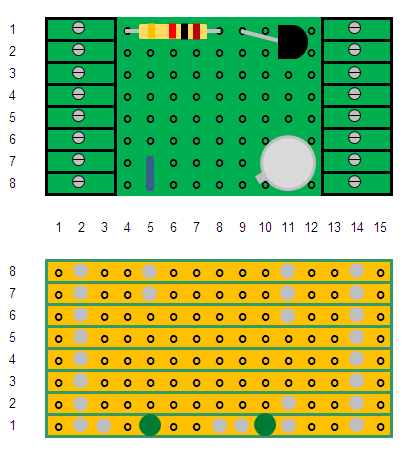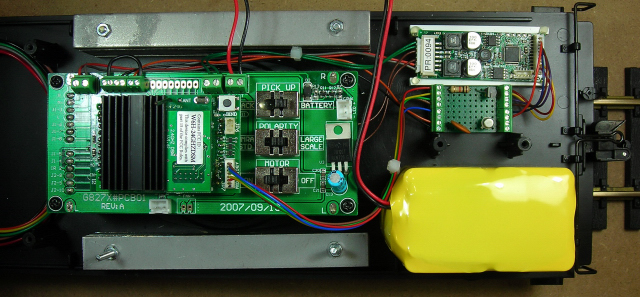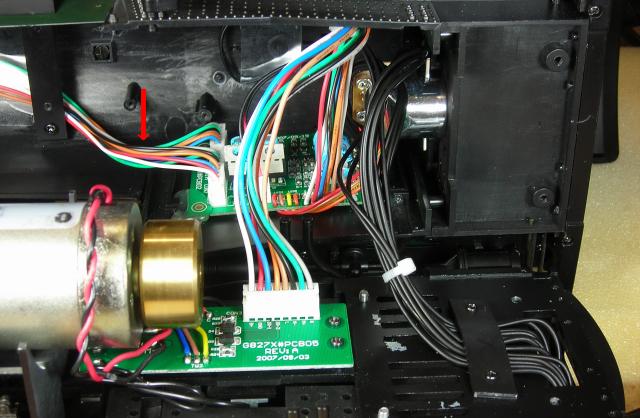I am in the process of a R/C battery conversion on a Bachmann Climax. Although I gutted the Bachmann electronics, I kept the optical chuff sensor. For those of you who may not understand how optical chuff sensors operate, here is how I adapted it for use with a Phoenix P8 sound card.
There are two identical optical chuff sensors in the Climax; one for each cylinder. Each sensor provides two chuff pulses per rotation of the counterweight. I only needed to use one of the sensors since I will be using the Phoenix P8 to double the number of chuffs per pulse. Here is how I wired the sensor:

The block shaded in gray represents the Bachmann sensor. There are four wires to the sensor: brown, red, orange, and yellow. The brown and red wires connect to the anode and cathode of an IR LED. The orange and yellow wires connect to the collector and emitter of a photo transistor.
The IR LED is on continuously when power is applied. The light is reflected back into the photo transistor twice during each revolution of the counterweight. When the IR light hits the photo transistor, it conducts and takes the chuff output to ground. When the light does not hit the photo transistor, it does not conduct and the chuff output goes to +5 volts.
The +5 volts is derived from the main battery. I used a ¼ Watt, 5%, 270 ohm resistor to set the current through the LED and a ¼ Watt, 5%, 1000 ohm resistor to provide pull-up for the collector of the photo transistor. The chuff output connects to TRIGGER1 on the Phoenix P8.
I used a high efficiency D24V5F5 500 mA switching step down (buck) voltage regulator from Pololu to derive the +5 volts from the main battery.
The Phoenix seems to trigger equally well when set to either positive or negative chuff trigger.
Bob







